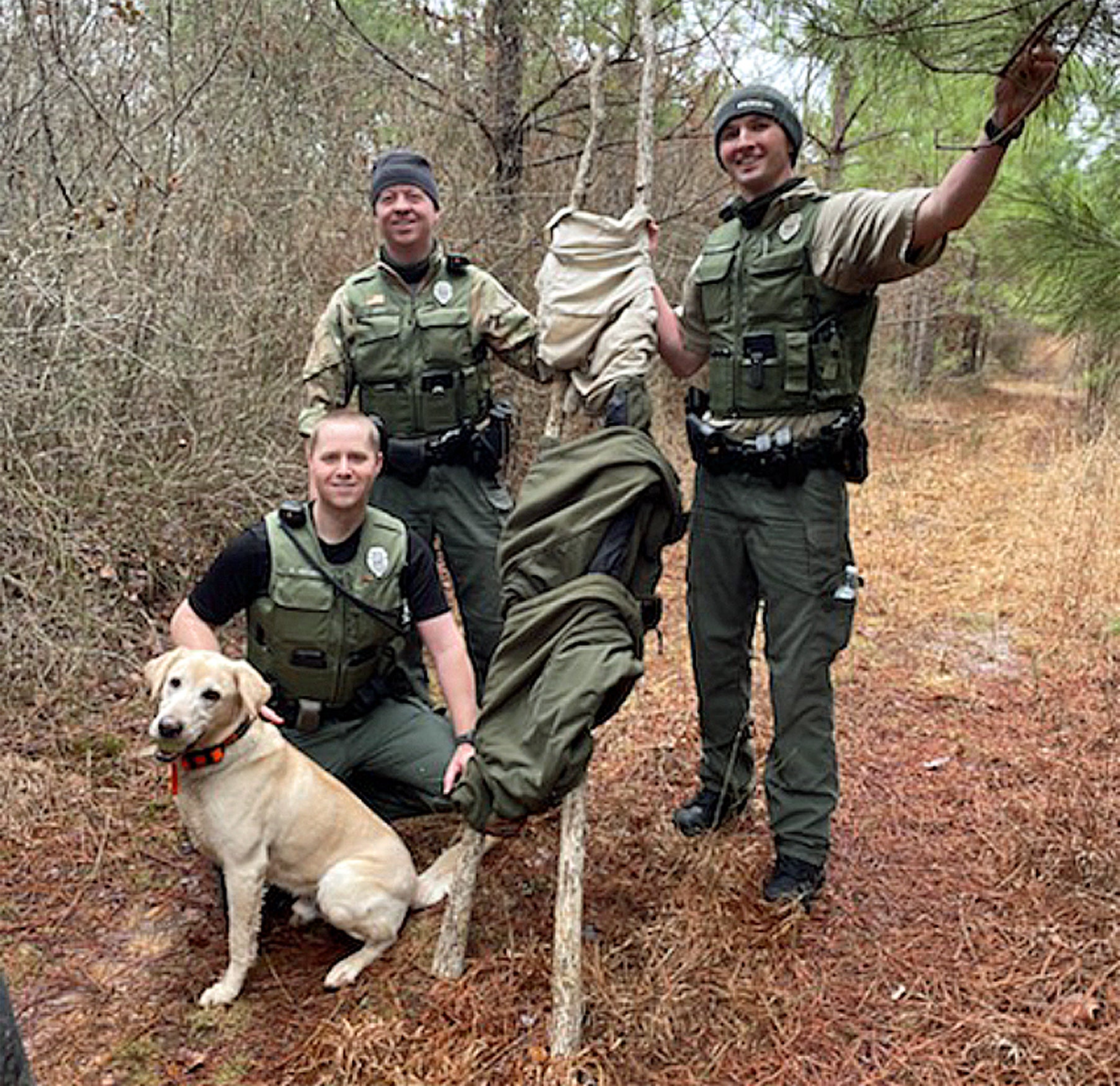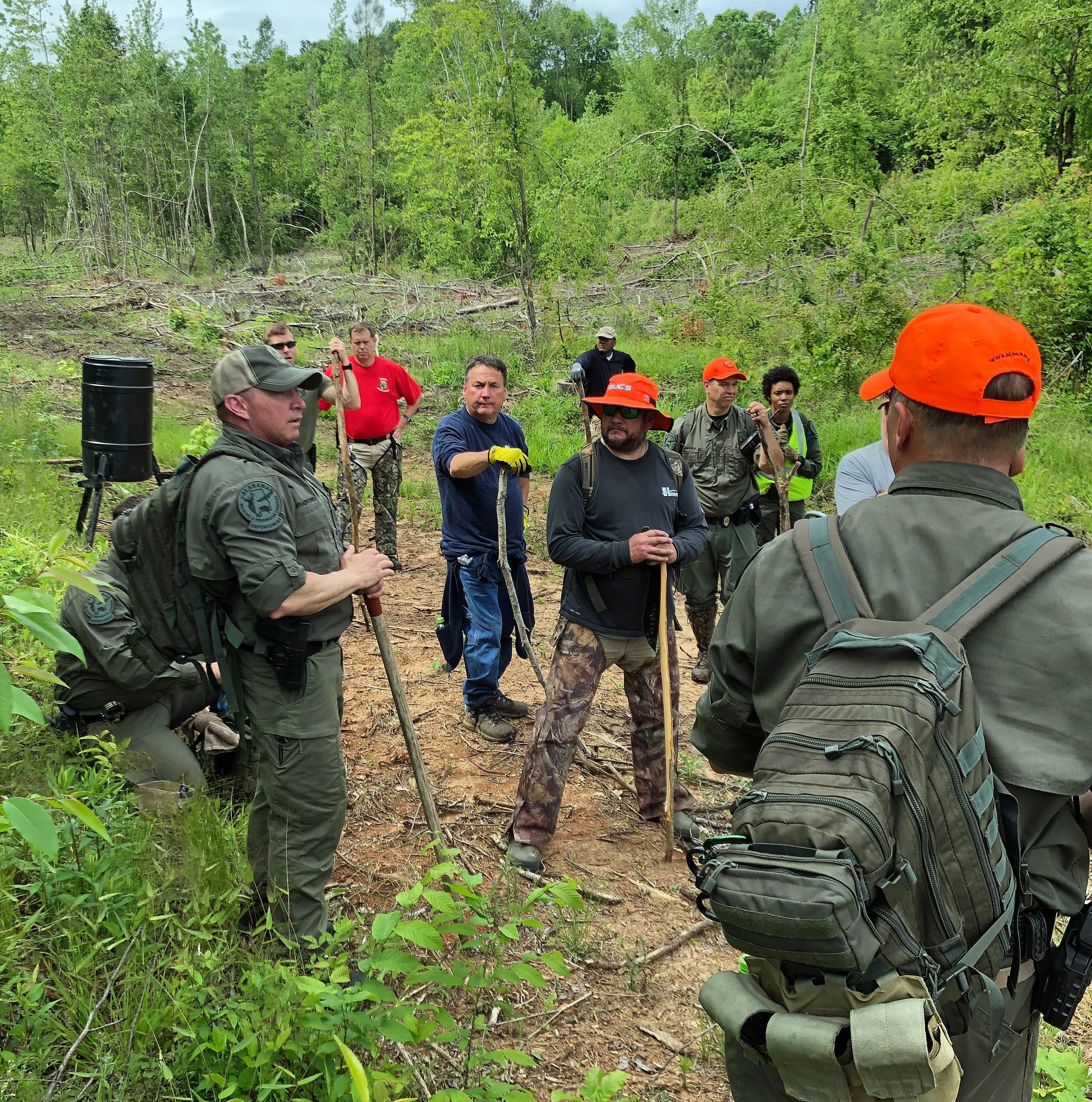By DAVID RAINER, Alabama Department of Conservation and Natural Resources
In 2017, the Law Enforcement Section of the Alabama Wildlife and Freshwater Fisheries (WFF) Division began providing specialized training for its new recruits. The Section has now expanded to sharing that unique training with other agencies, even with other states.
Carter Hendrix, Assistant Chief of WFF Law Enforcement, said the idea to offer more that basic training to help new recruits transition to the Alabama Department of Conservation and Natural Resources (ADCNR) came to fruition in 2017 with the Rural Operations for Law Enforcement curriculum.
“Our instructor cadre came up with the idea of helping new trainees get a jump-start on their careers by teaching them vital skills outside the standardized training we do, like firearms qualifications,” Hendrix said.
The expanded training includes Wilderness Medical Skills training, Search Formations proven by military tactics, and Man-Tracking Skills.
After the Rural Operations for Law Enforcement instructors amassed information and wrote a student manual in 2018 to go with the training, they started traveling the state to train game wardens.
“We did five courses statewide and taught every game warden these vital skills,” Hendrix said.
The course begins with Wilderness Medical Skills.
“Basically, they’re taught to stabilize an injured person in order to get them to a higher level of care, either a hospital or EMT (Emergency Medical Technician) on the nearest roadside,” Hendrix said. “It covers everything from stopping blood loss to constructing improvised methods of carry, like hasty litters and drags. We construct hasty litters by cutting small trees, or poles, and use two or three uniform shirts to carry the injured person on a litter.”
At times, game wardens will help to search for missing persons or suspects attempting to flee from law enforcement. The Search Formations instruction deals with those scenarios.
“We teach working in formation to search for Alzheimer’s patients, lost hikers and hunter, or sometimes fugitives attempting to escape in a wilderness terrain,” Hendrix said.
Man-Tracking is the final portion of the training.
“Man-Tracking is exactly what it sounds like,” Hendrix said. “It’s being able to identify tracks, being able to locate tracks or sign of any person or animal passing through an area. Sign could be footprints, broken limbs, trash, or any number of things.
“We take two days and teach those skills. Then we run realistic scenarios to test the officers’ skill levels and determine what they have learned.”
In 2018, Alabama was the host for the annual Southeastern Association of Fish and Wildlife Agencies (SEAFWA) Conference in Mobile. During the conference, WFF Law Enforcement presented a condensed version of the Rural Operations training to the law enforcement chiefs from other states at an off-site event in Baldwin County.
“We took them to the Baldwin County Sheriff’s Department range and shared with them some of the training we were utilizing as an outreach tool to other sheriff’s departments, police departments and rescue squads in an effort to share our knowledge and capabilities with other agencies,” Hendrix said. “They loved the idea and the backpacks we issue as go-bags to the officers. The contents of those go-bags include first-aid kits and blood-loss control items like tourniquets and granulated blood stop. The officers also take extra ammo, food and water. Some of the items we mandate for uniformity, and some may be personal preference.”







